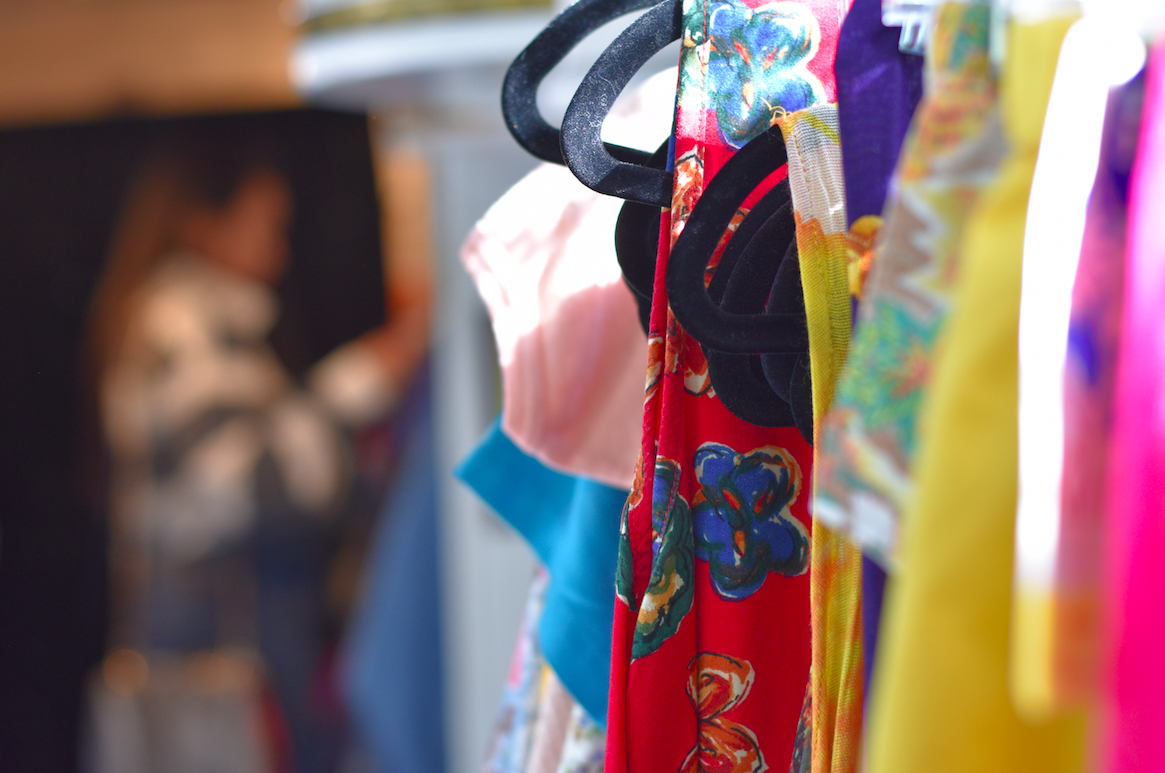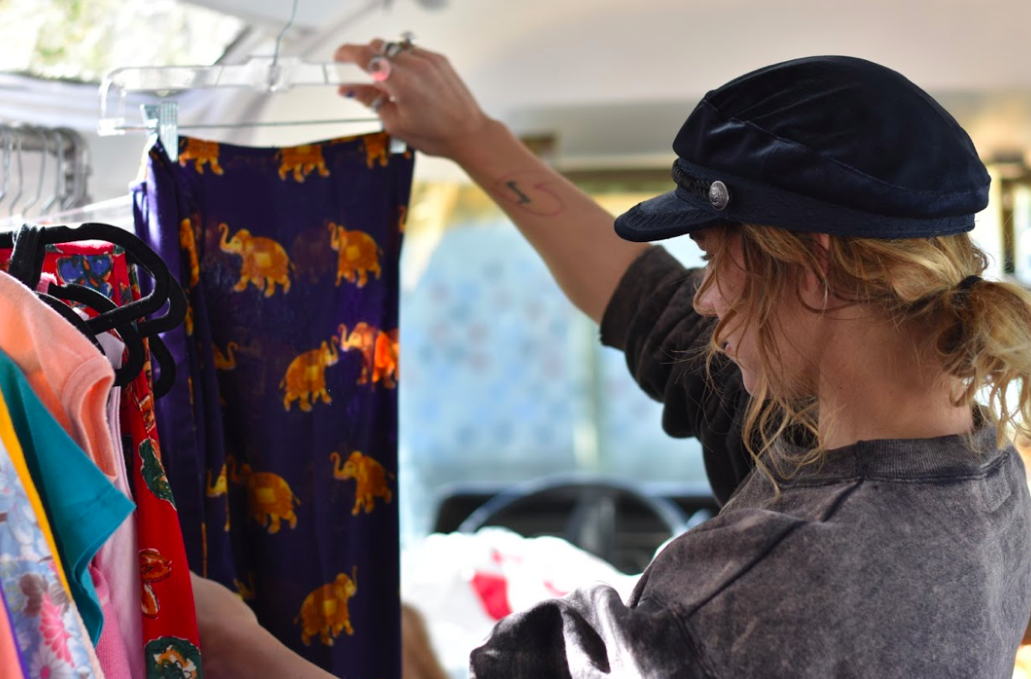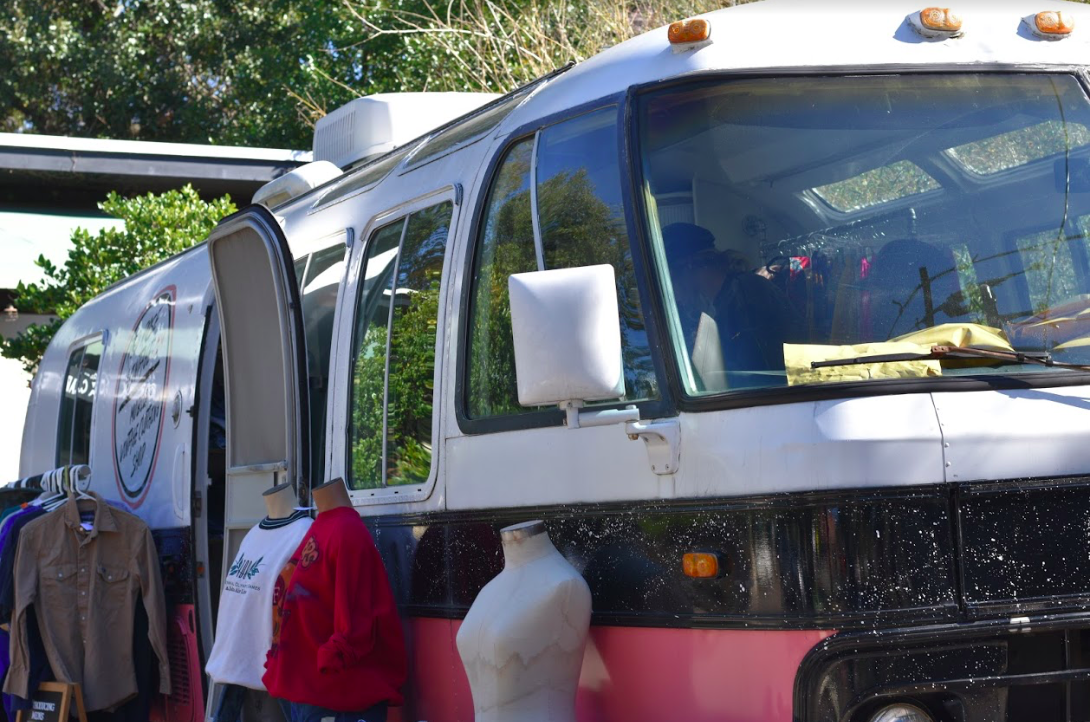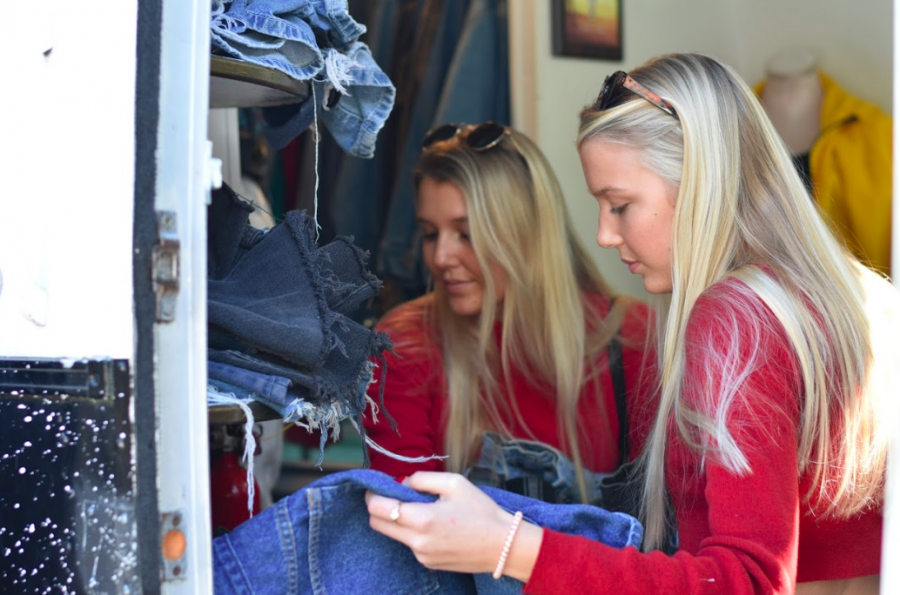Saving the planet with fabric
February 1, 2019
The clothes that are worn everyday — purchased, worn down and thrown out — are some of the silent killers of the Earth and her inhabitants.
Fabric is wearing out the world.
As fast fashion brands such as Zara and H&M gain in popularity among the new generation, concerns have developed over the production of this clothing. Fast fashion is the turnaround of runway styles to cheaper markets in as little time as two weeks. It has single-handedly become both the evil behind the curtains of the fashion industry and a necessity of the consumers.
“It has to do with trends and how they turn trends into such short-lived things to be replaced,” said Doreptow-Kovacs, professor of fashion at the SCAD Institute. “And because they are set at such low price points, people don’t even think twice.”
The practice of fast fashion — at some of the lowest costs — employs synthetic, cheap fibers and low-paid workers to manufacture cheap goods to be pumped out to serve the greater consumer population with styles that trend in and out by the seasons. This system proves beneficial to the average consumer and the manufacturer — decreasing the cost of production and retail.
From the designer point of view, fast fashion is stripping the industry of individuality with the focus on the trend, fashion student Layne Barron said.
“[Fast fashion] has turned the industry into less of an art,” said Barron, who is attending the Fashion Institute of Technology after graduating from Wando in 2018. “Historically, fashion was about uniqueness, hand crafted and intricate design of the garment, hours of labor going into it. But now you see a trend and you want to copy it, mimic it, get it out as fast as possible.”
However, some designers and brands have been finding innovative ways to side-step the vicious cycle of “trends.” The sustainable fashion movement has gained speed from select designers and initiatives from select brands.
“The fashion and textile industry is often called the most polluting industry that we have.” Barron said. “So sustainable fashion is about limiting that and doing practices that are more environmentally friendly.”
As well as being conscious about their environmental footprint, sustainable brands are also changing their labor sources. Fair-trade and cruelty free movements are infiltrating the fashion industry. Sustainable brands use transparency as a key foundation to their marketing to display these efforts.
However, one of the burdens that fall on the consumer is the price.
Prices of sustainable products are higher than those of fast fashion brands. Where a pair of jeans at H&M could range from $9.99 to $24.99, a pair of sustainable, quality and ethically-sourced pair of jeans from Reformation ranges from $98 to $128.
For the majority of the consumer base in America who are accustomed to purchasing products at such a low rate, are not able, financially, to see this transition into sustainable fashion through.
But the high prices of the pieces are most of the time matched by the quality of the garment. A large responsibility on the shoulders of the consumer is to “hold on to [the] pieces” and to “wear them out” to take full advantage of the cost, Treptow-Kovacs said.
A sustainable garment is an investment — an investment into the future of the environment, laborers abroad, the success of the brand and a long-lasting quality garment.
“You should judge a garment as someone you are going on a date with,” Treptow-Kovacs said.
“You know, is this someone I want to bring home to introduce to my family… Is this a one time
fling? Or is this [a product] I want to invest in a relationship?”

Rose’s wide range of vintage styles and fabrics hang from the racks of the RV based store.
Materials and Process
Sustainable fashion is distinguished from fast fashion less by the principle and more by the means of production. To measure the sustainability of the garment, researchers and manufacturers look at how they are being made, where they are coming from and what is happening to the garments after use.
When distinguishing a sustainable material, it is “not necessarily the fiber itself, but maybe the treatment of that fiber,” Treptow-Kovacs said. “If it was coated, it can biodegrade but it can still release some toxin.”
Other ways brands or companies are taking sustainable initiatives are by sponsoring groundbreaking research being done on sustainable technology.
The use of synthetic fibers are going to be more damaging to the earth to produce. However, there are ways that they can still be sustainable, Treptow-Kovacs said.
Companies like Repreve are taking recycled plastic water bottles and deconstructing them to produce a synthetic fiber to construct athletic wear — Patagonia and Roxy being some of the brands that outsource this material.
There are also new types of fibers being used in up and coming brands — one including hemp.
“Hemp is something that I am personally interested in,” Barron said. “It is a very sustainable crop, but it is definitely something with a lot of legal ramifications. It is very upcoming material.”
Not only are the materials crucial to the sustainable movement but so is the labor source. Ethically-sourced labor has become increasingly important to many consumers in recent years, and many brands are shaping to the needs of their demographics.
“As the internet has continued to grow, people have been more conscience of what their footprint is,” Barron said. “At the same time, when people started liking organic food and trying to follow fair trade, the same has happened for fashion.”
The process and means of production determines a brand’s sustainability — this movement is evident through the list of materials on the shopping tag and the faces behind the garment.

Amy Rose displays the unique vintage fabrics she puts up for sale.
Thrifting
Despite the efforts made by sustainable brands, they leave behind many who cannot afford the high prices — especially youth and young adults. What is left for those who cannot afford these products is another type of sustainable consumerism.
Thrifting.
The attitude towards second-hand has shifted in the past decade. Many teens are using their free time to thrift or shop vintage, according to Barron and local business owner Amy Rose. This gives older pieces new life, limits financial support for fast fashion and avoids the spreading of negative waste.
Sophomore Abby Sullivan has a tradition with her friends on the weekends to go to the Six Mile Goodwill, split up and shop for each other. They find “gems” while sifting through the many racks of donated items and make the activity almost like a gift giving “game” for their friends, Sullivan said.
“When I buy things from H&M and fast fashion, I always feel bad because there is someone who suffered,” Sullivan said. “But for the Goodwill, it is a nice experience because originally someone bought it then gave it to Goodwill. And it’s not harming anyone, it’s not making new clothes.”
Thrifting has grown in popularity among teens, with even personalities on social media capitalizing off thrifting and reselling clothing.
“That is one thing I love about our generation is the fact that we are not embarrassed to wear someone else’s clothes or clothes that are not cheap or clothes that are from a different time period. I think that teens are really driving that force,” Barron said.
Rose, local business owner of Red Rose Vintage, uses her appreciation of sustainability to sell vintage clothing from the 1980s and ‘90s out of her recycled ‘76 Airstream RV. Rose and her buyer clean out houses, source from flea markets, yard sales and estate sales to obtain her extremely specific, curated lines of clothing that all follow the same “vibe.”
Senior Amelia Walker shops at Red Rose Vintage.
“It’s also fun to walk around and search for really unique pieces — shirts and jackets — that you just couldn’t see elsewhere because they’re so eclectic,” Walker said. “It is local, so I know that I’m helping out the community and also environmentally, it makes a lot of sense to reuse and resell old clothes for new purposes, so people can continue to enjoy them down the road.”
Her clothing averages from $20-$24, more expensive than thrifting but less than sustainable brands.
“Vintage is so popular these days… you can’t find anything for $20 bucks these days, and if you do, it is Forever 21, and you’re going to wash it and it’s going to fall apart,” Rose said. “So many pieces end up in the landfill at the end of the day, so if I can save those and give them new life…, I think it is great.”
Not only does she recycle fabrics and clothing, Rose recycles her old price tags, uses recycled paper bags and operates out of a recycled vehicle.
“I think if designers used recycled fabric, like what a difference that would make. And the fabric was so much better back in the day anyway,” Rose said. “You are going to have it for your entire life.”
Education
Junior Lila Mack and sister Allie Mack shop at Red Rose Vintage on Jan. 26 for denim shorts before grabbing a bite to eat at the nearby cafe.
One of the most difficult parts of the sustainable fashion movements is the transition.
Consumers are accustomed to purchasing the $4.99 T-shirt, wearing it three times before the seams break, tossing it out and repurchasing that shirt. However, they are mostly unaware of the detriments of this cycle, Treptow-Kovacs said.
Purchasing the $16 T-shirt from a store like Everlane is 320% of the other price however it allows for a long-lasting T-shirt.
“We are very want-driven. You see something online, and you want it yesterday…” Barron said. “It is a hard problem to solve because mentality wise, it goes against our thought process to buy something that is a little more expensive.”
Educators, like Treptow-Kovacs, are engaging their students in activities and lessons that promote sustainable fashion, but beyond the classroom, education is lacking on this topic.
“That is one of the biggest issues today in the industry is that we don’t know where anything is coming from. If you ask a child where milk comes from, they will tell you the grocery store. They are not seeing the process… Education is key,” Treptow-Kovacs said. “When you have an educated market, they make wiser choices.”
As much as companies are responsible for sponsoring sustainable initiatives, through education, now the responsibility lies on the backs of the consumer.
“But I think as more and more comes out about fast fashion, I think more people realize that we have to take it upon ourselves to fix the problem,” Barron said. “We can’t expect companies to solve the problem, when we continue to purchase fast fashion… It is on the consumer.”


